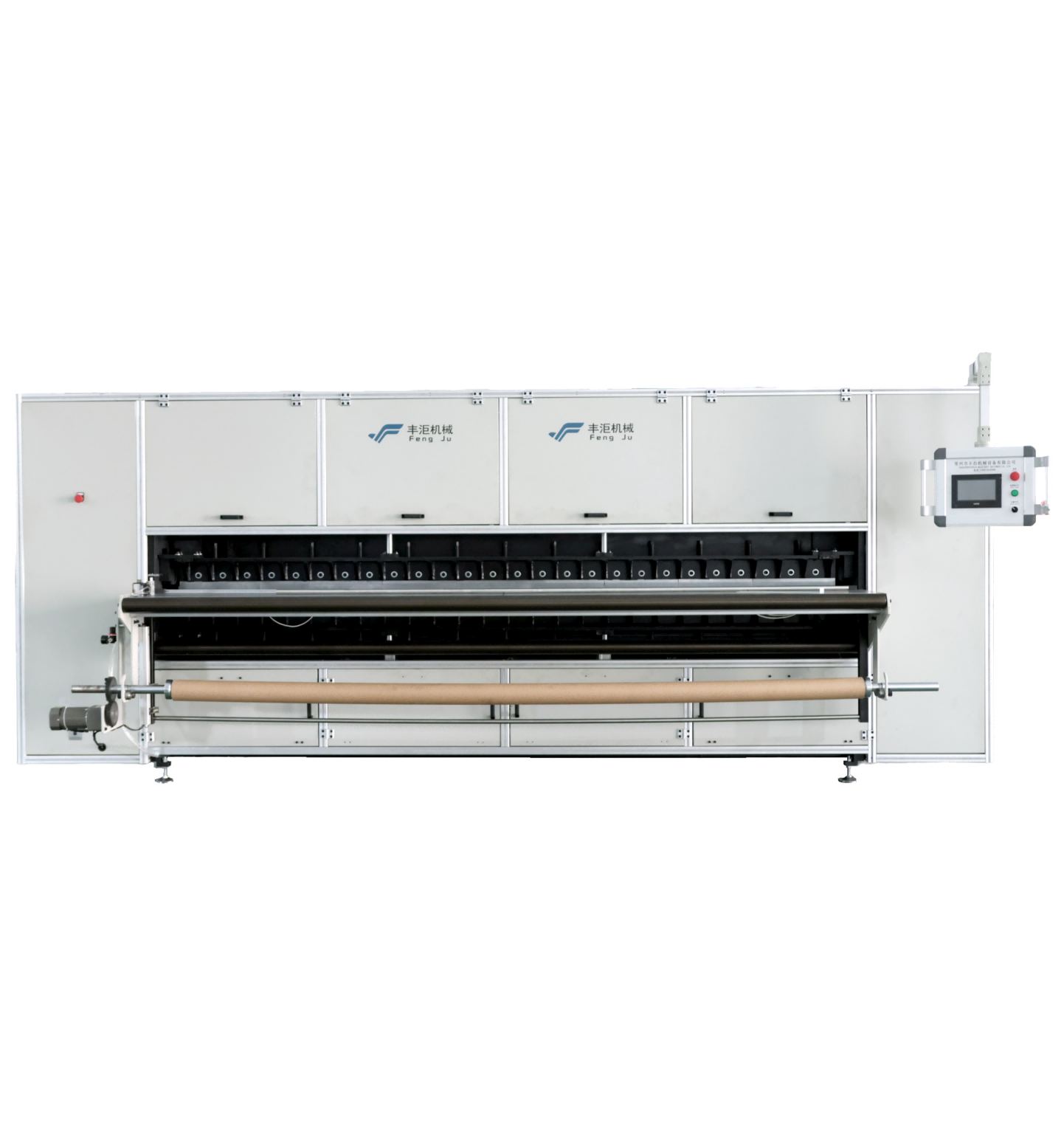Introduction – Role of Pleating Machines in Blinds Production
In the growing window treatment industry, manufacturers increasingly turn to high-efficiency machines to meet demands for speed, quality, and flexibility. Among them, the Window Blinds Pleating Machine, especially the blade-style pleating machine, has gained popularity for its precision and reliability. Designed specifically for pleating various types of blind fabrics, these machines use synchronized blade systems to create consistent folds without deforming or damaging the material.
Compared to older technologies, the blade-based mechanism ensures clean pleat lines, better material handling, and minimal fabric distortion. In this blog, we’ll explore which key features of a Window Blinds Pleating Machine contribute most to output, especially in high-demand manufacturing environments.
Automatic Feeding System
Ensures Continuous and Uninterrupted Workflow
A major driver of productivity is the automated fabric feeding system. In a blade-type Window Blinds Pleating Machine, fabric is drawn into the pleating zone through a synchronized feeding track that maintains stable tension and positioning. This reduces the risk of creases, jams, or misfeeds.
For high-volume operations, this automatic feeding setup allows operators to load bulk rolls and let the machine process continuously with minimal supervision. The steady fabric movement directly supports consistent pleating output and minimizes idle time.
Reduces Manual Labor and Downtime
Without the need to constantly realign or manually push fabric, workers can focus on overseeing quality control or prepping the next batch. This automation streamlines the workflow and cuts labor hours, which is essential for cost-effective production.
Adjustable Pleat Settings
Allows Quick Changeovers for Different Styles
A crucial feature of modern Window Blinds Pleating Machines is the ability to adjust pleat dimensions quickly and accurately. Blade-style machines offer fine-tuned control over pleat depth and spacing through mechanical dials or digital interfaces, often without requiring mechanical disassembly.
This allows manufacturers to switch from accordion pleats to flat or double pleats in minutes, making the machine ideal for both mass production and small-batch custom orders.
Enhances Customization and Small-Batch Efficiency
With adjustable blade position settings, fabric can be pleated with varying compression levels—ideal for fabrics with different densities and stiffness. This flexibility not only improves the aesthetic result but also minimizes the need for separate machines for different blind styles.
Precision Control
Maintains Uniformity Across All Units
Blade-style pleating machines are favored for their exceptional control over pleat accuracy. Unlike compression-based systems, the synchronized blade movement ensures each fold is precisely made with uniform depth and spacing. This level of control is crucial for producing blinds that meet exact size and fit standards.
By maintaining fixed blade trajectories and pressure, the machine ensures repeatability over thousands of cycles without drift, which is essential for consistent quality.
Reduces Material Waste and Improves Efficiency
The accurate control of pleat formation minimizes fabric misalignment and over-compression. This translates into less material waste and fewer rejected pieces—both of which help manufacturers save on raw material costs and increase yield.

High-Speed Operation
Increases Daily Production Capacity
A key advantage of a blade-based Window Blinds Pleating Machine is its ability to operate at high speeds without compromising accuracy. The rapid vertical action of the blade set enables continuous pleating, even with thicker or coated fabrics.
Manufacturers can produce hundreds of meters of pleated blinds in a single shift, meeting demanding deadlines without delays or quality drops.
Maintains Quality at High Speeds
Thanks to blade synchronization and controlled stroke timing, these machines maintain pleat consistency even during fast operation. Unlike systems that rely on mechanical friction or rolling compression, blade-based designs apply direct pressure precisely where needed—eliminating irregular folds or material bunching at higher speeds.
This makes the machine ideal for high-throughput environments where both speed and quality must be maintained.
Conclusion – Key Features That Enhance Efficiency in Blinds Manufacturing
The Window Blinds Pleating Machine—especially the blade-style design—offers a suite of features that significantly enhance productivity. Automatic feeding, quick-adjust pleat settings, high-precision control, and fast operation all contribute to greater output and lower production costs.
By investing in the right machine, manufacturers can confidently scale operations, offer more custom options, and maintain a reputation for quality. Blade-style pleating machines, in particular, offer the edge needed to stay competitive in the evolving window coverings market.
FAQ: Common Questions About Window Blinds Pleating Machines
What are the advantages of blade-style pleating machines over traditional methods?
Blade-style machines offer greater pleat accuracy, faster changeovers, less fabric distortion, and superior consistency at high speeds.
Can blade-type machines handle different fabric types?
Yes, they are compatible with a wide range of fabrics, including polyester, blackout-coated materials, and delicate woven blends.
How does pleat adjustment work on a blade-style machine?
Most use either a digital interface or manual control to set blade spacing, depth, and stroke pressure—ideal for both mass and custom production.
Is there less fabric damage compared to roller systems?
Yes. Blade-style machines avoid surface compression, which can leave unwanted marks or deform delicate textiles.
What maintenance do blade-based machines require?
Regular blade sharpening or replacement, light lubrication of the drive system, and software calibration are typically all that’s needed for smooth operation.
Table of Contents
- Introduction – Role of Pleating Machines in Blinds Production
- Automatic Feeding System
- Adjustable Pleat Settings
- Precision Control
- High-Speed Operation
- Conclusion – Key Features That Enhance Efficiency in Blinds Manufacturing
-
FAQ: Common Questions About Window Blinds Pleating Machines
- What are the advantages of blade-style pleating machines over traditional methods?
- Can blade-type machines handle different fabric types?
- How does pleat adjustment work on a blade-style machine?
- Is there less fabric damage compared to roller systems?
- What maintenance do blade-based machines require?

